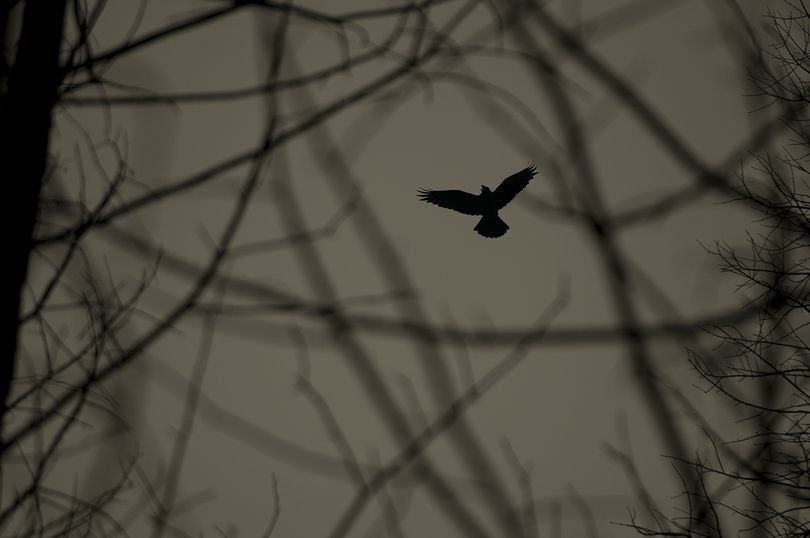Extreme fire danger prompting restrictions, campfire bans on national forest

FIRE SEASON -- High temperatures and no rain have rendered the landscape a tinderbox and the inevitable restrictions are coming.
The Colville National Forest is the first of others to come to step up fire-prevention restrictions to higher levels, including a complete ban on campfires, starting Sunday, Aug. 6.
The news comes two days after existing fires prompted closure of the forest road that leads from Sullivan Lake to Pass Creek Pass and access to the east side of the Salmo-Priest Wilednerness and the Priest River drainage.
Here's the full media release posted by Colville officials today.
Colville National Forest officials are implementing Stage II fire restrictions on Sunday, Aug. 6, 2017, at 0001 hrs. (12:01 a.m.). Campfires will be banned in all areas of the Colville National Forest, including campgrounds. These restrictions apply to all areas, roads, and trails on the Colville National Forest.
“These restrictions are needed as we continue to see temperatures climb and forest vegetation become increasingly dry and flammable. In order to help reduce the risk of a catastrophic wildfire, we are moving into Stage II fire restrictions,” said Tim Sampson, Fire Management Officer for the Colville National Forest. Sampson added, “this increased step in fire prevention shows how serious our fire danger is anticipated to be and should serve as a reminder to forest visitors to pay extra attention while out enjoying their National Forest.”
Currently, the Colville National Forest is experiencing “very high” fire danger with fire behavior indicators well above the 90th percentile. Historically, when fire behavior indicators reach the 90th percentile, the Forest experiences large fires and fires that have the potential to quickly escape initial attack efforts by firefighters.
In addition to fire restrictions, the Colville National Forest has been in Industrial Fire Precaution Level II (IFPL2) since July 21, also known as "Hoot Owl" wood cutting restrictions.
- Hoot Owl is a historic term used to notify woodcutters of elevated fire danger and limited the use of chainsaws to the morning hours when you can hear Hoot Owls. This has developed into the modern policy of no chainsaws running in the woods after 1:00 p.m. The restriction is in place to reduce the risk of an accidental fire start by mechanical equipment during the hottest and driest part of the day.
- A long handled shovel and a pressurized chemical fire extinguisher not less than 8 oz. in capacity is required by all firewood cutting permit holders.
- Permittees are also required to monitor the area they cut in for one hour after cutting to ensure no spark has been fanned to a flame.
Industrial Fire Precaution Level III (IFPL3) will be going into effect on Sunday, August 6, 2017, at 0001 hrs. (12:01 a.m.) in IFPL Zones 685, 686 and 687.
IFPL3 “Partial Shutdown” prohibits operating a chainsaw or other equipment powered by an internal combustion engine in violation of Industrial Fire Precaution Level (IFPL) Directives. IFPL 3 Partial Shutdown does not allow any firewood cutting either for commercial or personal use with a power saw. For commercial timber operators, operating at landings, chainsaw use is allowed only from 8 p.m. to 1 p.m. For more information of IFPL visit: www.dnr.wa.gov/ifpl
Motorists are reminded to exercise caution when driving on Forest roads and trails by avoiding dry grass and vegetation; hot exhaust systems can easily ignite dry grasses. Visitors are also encouraged to have a shovel, water, and a fire extinguisher available.
Charcoal grills are also prohibited during Stage II fire restrictions. Charcoal burns longer and hotter than wood and may appear to be cold; however, hot embers can linger for hours. Winds can spread the embers from charcoal and campfires into vegetation, and ignite a wildfire. Propane or white gas stoves and lanterns are acceptable for use during Phase II fire restrictions.
It is also important to remember that fireworks and exploding targets are never allowed on National Forests.
Restrictions at a glance:
Effective August 6, 2017 at 12:01 am, the following actions are prohibited on National Forest System Lands:
· Building, maintaining, attending or using a fire or campfire; including in developed recreation sites
· Smoking outside of a building, vehicle or while stopped with an area ten (10) feet in diameter cleared of all flammable materials
· Operating an internal combustion engine other than a motor vehicle in an area that does not have at least 10 feet in diameter that is barren or cleared of all flammable material. Exceptions: generator or pumps, etc. when fully contained within a pickup truck bed that is devoid of all flammable material; when factory installed in a recreational vehicle and is located in the center of an area at least 10 feet in diameter that is barren or cleared of all flammable material.
· Chainsaws powered by an internal combustion engine are prohibited in zones 685, 686 and 687.
· Chainsaws are allowed with IFPL Restriction outside of zones 685, 686 and 687, but are required to follow Industrial Fire Precaution Level restrictions, guidelines and definitions
· Blasting, welding, grinding, target shooting or any activity that would create hot sparks or the potential for fire
· Fireworks and exploding targets are always illegal on the National Forest
Please report fires by calling 9-1-1, or (509) 685-6900, the Northeast Washington Interagency Communication Center in Colville. For more information on equipment requirements or if you have questions concerning the fire restrictions, please contact your local Ranger Station or the Colville National Forest Headquarters.
